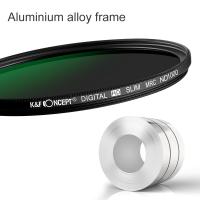What Is The Purpose Of The Microscope ?
The purpose of a microscope is to magnify and visualize objects that are too small to be seen with the naked eye. It allows scientists, researchers, and students to study and examine the details of microscopic structures, such as cells, bacteria, and other tiny organisms. Microscopes are essential tools in various scientific fields, including biology, medicine, chemistry, and materials science. They enable the observation of fine details, the identification of cellular structures, the examination of microorganisms, and the analysis of various materials at a microscopic level. By providing a closer look at the microscopic world, microscopes contribute to advancing scientific knowledge, understanding diseases, developing new technologies, and enhancing our understanding of the natural world.
1、 Magnification: Enlarging objects to observe minute details.
The purpose of a microscope is to magnify objects and enable the observation of minute details that are otherwise invisible to the naked eye. By using a combination of lenses and illumination techniques, microscopes allow scientists, researchers, and students to explore the intricate world of cells, microorganisms, and other tiny structures.
One of the primary functions of a microscope is to increase the size of an object, making it easier to study and analyze its characteristics. Magnification is achieved by using a series of lenses that bend light and focus it onto the specimen, resulting in an enlarged image. This allows scientists to observe and document the intricate structures and features of cells, tissues, and microorganisms.
Microscopes have played a crucial role in various scientific fields, including biology, medicine, chemistry, and materials science. They have revolutionized our understanding of the natural world and have contributed to numerous scientific discoveries. For example, in the field of medicine, microscopes have been instrumental in identifying and studying disease-causing microorganisms, leading to the development of effective treatments and vaccines.
In recent years, advancements in microscopy technology have further expanded the capabilities of microscopes. Techniques such as fluorescence microscopy, confocal microscopy, and electron microscopy have allowed scientists to visualize and study structures at an even higher resolution. These advancements have opened up new avenues of research and have provided valuable insights into the complex workings of biological systems.
In conclusion, the purpose of a microscope is to magnify objects and enable the observation of minute details. From its humble beginnings to the latest advancements, the microscope continues to be an indispensable tool in scientific research, allowing us to explore the hidden world that lies beyond our naked eye.

2、 Resolution: Enhancing clarity and distinguishing closely spaced structures.
The purpose of a microscope is to magnify and visualize objects that are too small to be seen with the naked eye. However, one of the most important aspects of a microscope is its ability to enhance the resolution, which refers to the clarity and level of detail that can be observed in the image.
Resolution is crucial in microscopy as it allows scientists and researchers to distinguish closely spaced structures and observe fine details within a specimen. By enhancing the resolution, a microscope enables the visualization of intricate features that would otherwise be indistinguishable. This is particularly important in fields such as biology, medicine, and materials science, where the ability to observe and analyze minute structures is essential for understanding the functioning of cells, diagnosing diseases, and studying the properties of materials at the nanoscale.
In recent years, there have been significant advancements in microscopy techniques and technologies that have further improved resolution. For instance, the development of super-resolution microscopy techniques, such as stimulated emission depletion (STED) microscopy and structured illumination microscopy (SIM), has allowed scientists to surpass the diffraction limit of light and achieve resolutions at the nanoscale. These techniques have revolutionized the field of microscopy by enabling the visualization of molecular interactions and the study of subcellular structures with unprecedented detail.
Furthermore, advancements in digital imaging and image processing have also contributed to enhancing resolution. High-resolution cameras, sophisticated algorithms, and computational techniques have allowed for the improvement of image quality, noise reduction, and the extraction of fine details from microscopic images.
In conclusion, the purpose of a microscope, particularly in terms of resolution, is to enhance clarity and distinguish closely spaced structures. The continuous advancements in microscopy techniques and technologies have significantly contributed to our understanding of the microscopic world and have opened up new avenues for scientific research and discovery.

3、 Illumination: Providing adequate light for visibility and contrast.
The purpose of a microscope is to magnify and visualize objects that are too small to be seen with the naked eye. However, one crucial aspect that enables effective visualization is illumination. Illumination plays a vital role in providing adequate light for visibility and contrast, allowing the observer to see the specimen clearly and in detail.
Proper illumination is essential for several reasons. Firstly, it enhances visibility by increasing the amount of light that reaches the specimen. This is particularly important when observing transparent or translucent samples, as they may not reflect or scatter enough light to be easily seen. By illuminating the specimen, the microscope ensures that it becomes visible and distinguishable from its surroundings.
Secondly, illumination helps to create contrast, which is crucial for highlighting specific features of the specimen. By adjusting the intensity and angle of the light source, different parts of the specimen can be emphasized or suppressed, making it easier to observe and analyze its structure and characteristics. Contrast is especially important when studying samples with low inherent contrast, such as unstained biological tissues or thin sections.
Moreover, advancements in illumination techniques have significantly improved the capabilities of microscopes. For instance, the development of techniques like darkfield and phase contrast microscopy has allowed for the visualization of transparent or unstained samples without the need for additional staining or preparation. These techniques utilize specialized lighting methods to enhance contrast and reveal fine details that would otherwise be difficult to observe.
In conclusion, the purpose of illumination in a microscope is to provide adequate light for visibility and contrast. It enables the observer to see and analyze specimens that are too small to be seen with the naked eye, enhancing visibility and highlighting specific features. With the continuous advancements in illumination techniques, microscopes have become even more powerful tools for scientific research and discovery.

4、 Observation: Examining specimens to gather scientific data and insights.
The purpose of the microscope is to enable scientists and researchers to observe and examine specimens in order to gather scientific data and insights. Microscopes have been instrumental in advancing our understanding of the natural world and have played a crucial role in various scientific disciplines, including biology, medicine, chemistry, and materials science.
Microscopes allow scientists to study specimens at a microscopic level, revealing details that are not visible to the naked eye. By magnifying the image of the specimen, microscopes enable scientists to observe and analyze its structure, composition, and behavior. This information is essential for understanding the fundamental processes and mechanisms that govern the natural world.
In biology, microscopes have been used to study cells, tissues, and organisms, providing insights into their structure, function, and development. Microscopes have also been instrumental in the field of medicine, allowing doctors and researchers to diagnose diseases, study pathogens, and develop new treatments. In chemistry, microscopes have been used to investigate the properties and interactions of molecules, while in materials science, they have been used to analyze the structure and properties of various materials.
With advancements in technology, microscopes have become more powerful and versatile. Modern microscopes can now capture high-resolution images and even record videos of dynamic processes in real-time. Additionally, techniques such as fluorescence microscopy and electron microscopy have expanded the capabilities of microscopes, allowing scientists to study specific molecules and even atomic structures.
In recent years, there has been a growing interest in the development of portable and affordable microscopes, particularly for use in resource-limited settings and for educational purposes. These advancements aim to democratize access to microscopy and promote scientific curiosity and exploration.
In conclusion, the purpose of the microscope is to facilitate observation and examination of specimens, enabling scientists to gather scientific data and insights. Microscopes have been and continue to be invaluable tools in advancing our understanding of the natural world and driving scientific progress.






























There are no comments for this blog.